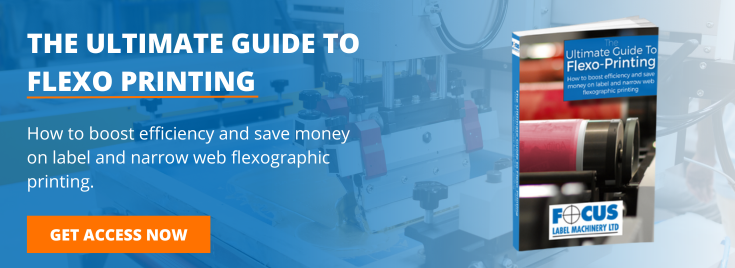
When used for medium & long print runs, the advantages of flexography far outweigh any minor disadvantages, thus making it the best printing technology for long-term return on investment.
Flexography is known for providing quality results and its efficiency in speed. The popularity of flexo printing continues to grow, despite widespread digitisation in many printing sectors. If you are interested in acquiring a new printing press, but you are unsure of how flexo stands in relation to other printing technologies, the first thing to do is get as much information as possible. Never invest blindly. Let’s take a look at the main advantages of flexography.
1) High Quality Print
Flexography achieves a consistently high level of print quality across a wide range of materials/substrates without the need of special coatings, as it reduces the overall cost per unit. This is a significant advantage over other print solutions which may have a very narrow band of compatible substrates.
2) High Speed Production
Flexo printing is fast. Presses manufactured in 2000 to 2002 for the packaging printing industry could manage an average speed of 150 to 300 ft./m (FPM), with 400 FPM being an acceptable norm. Modern Flexo presses have increased this capacity to over 600 FPM, giving a big advantage to businesses that have chosen to invest in more recent equipment. The use of rotary print heads also makes it possible to print continuous patterns, an innovation that allows printers to complete complex designs in a single print run.
3) Extremely Versatile Print Process
Flexographic printing can be applied to a wide range of industries, including textile printing, packaging printing, label printing and more. The versatility of the machines means that presses can be adapted to accommodate different types of order, giving print businesses the ability to diversify their market appeal and remain competitive.
4) Very Economic For Medium & High Volume Production
Despite great advances in digital printing, digital is still expensive and comparatively slow for medium and high volume print runs. For the many clients who still require medium to large volume print runs, especially in the label business, flexography wins hands down and can often compete with Digital on short runs too.
5) One-Off Cost For Plates
Detractors point to the hassle and cost of creating print plates for every flexographic print run, but this can also be viewed a different way. Once a plate is made, it can be used an indefinite number of times with no additional costs. This means that the larger the print run, the lower your cost per unit. If looked after correctly, Flexo plates can be reused many times, so that repeat orders can be printed with very few overheads. This often compares favourably with the design and setup time required for digital printing, especially on labour intensive short volume print runs.
6) In-Line Converting Flexibility
Cycle time is drastically reduced by the in-line converting capacity native to many modern Flexo presses. This means that most print runs can be completed in a single pass. Flexographic printers can integrate many other kinds of in-line processes too, including silk screen, hot foil, cold foil, digital print, variable data print, lamination, booklet insertion, RFID insertion, multi-layer printing, and reverse side print. It is also possible to apply primers, coatings, adhesives and varnishes in-line, cutting overall finishing time.
7) Possible To Print On A Wide Range Of Substrates
Flexographic printers can adapt themselves to print on a very wide range of substrates, including paper, board, foil, plastic film, cellophane, recycled substrates and a variety of textiles.
8) Possible To Use Different Types Of Inks & Drying Systems
Inks and drying systems have developed in complexity and efficiency alongside flexographic print technology itself. A modern flexographic press can use a variety of water-based or solvent based inks. Efficient drying mechanisms – whether using air heaters, IR or UV Driers – can increase web speed, reduce overall energy consumption and decrease ink usage. Printers have access to a potentially limitless number of colours through easy mixing of modern inks. Precise and repeatable colour formulas can be created that retain faithful consistency even when used on multiple substrates, e.g. company brand colours used on labels, food packaging and textiles.
9) Easy To Use And Maintain
One of the arguments in favour of digital printing is the supposedly cumbersome setup time required by flexographic presses. While this may have been the case in the old typesetting days, modern Flexo presses actually have very short set up and job changeover time, enhanced by the latest Servo drive systems. Furthermore, a Flexo press will give you a long production lifespan – and an impressive ROI – with relatively few maintenance requirements, so long as the unit is serviced regularly.
Investing In Modern Flexographic Print Technology
For a medium to high volume printer, flexography is still the obvious and most economic choice of investment. However, many of the distinct advantages of flexographic printing are due to recent improvements in Flexo technology. If you’re still using an old press more than 10 to 15 years old, you may be operating at a disadvantage compared with competitors using more recent equipment. To take full advantage of flexographic technology, it is worthwhile considering the potential returns of investing in a new press, or of retrofitting an older unit with modern print heads, servo motors and control systems.
To discover more of the advantages of flexographic printing please download our free Ultimate Guide To Flexo Printing by clicking here.







